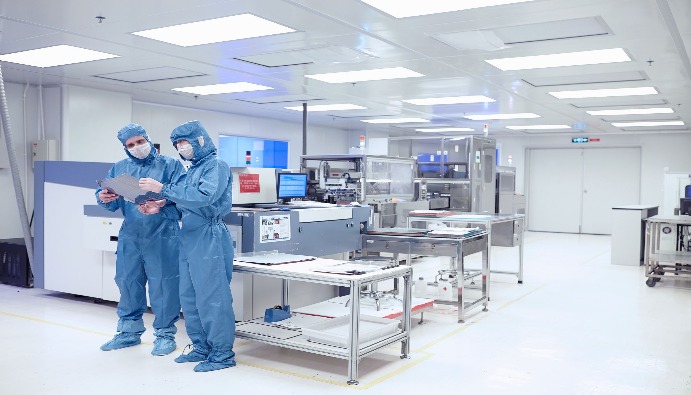Clean Room Validation Tests: Safety in Medical Products
What is a Clean Room? What are Clean Room Validation Tests?

What is a Clean Room?
A clean room is defined as a sterile environment where air quality is controlled according to special conditions, where the number of microorganisms and particles is minimized, and which operates under a certain temperature, humidity and pressure conditions. Clean rooms are especially necessary for the sterilization of products used in the production of medical devices, pharmaceutical production and biotechnological processes. These environments ensure that sterile products are protected from contamination.
Cleanroom environments are designed to ensure high hygiene standards at every stage of the production process. The design of these rooms, ventilation, filtration systems, personnel entry and exit controls and all production processes are regulated in detail.
Importance of Clean Room Validation
Cleanroom validation is performed to verify that the environment consistently meets high hygiene standards and provides the necessary conditions for the safe production of medical products. The purpose of these tests is to guarantee that the environment is operating in accordance with all cleanroom standards, minimizing the risk of contamination and ensuring that the correct environmental conditions are maintained to ensure the quality and safety of the final product.
The importance of cleanroom validation includes
- Prevention of Microorganism and Particulate Contamination: In cleanroom environments, airflow and filtration systems ensure that airborne microorganisms and particulates are removed. Validation tests determine the effectiveness and accuracy of these systems.
- Protecting the Quality of Medical Products: Medical products must be produced in a sterile and uncontaminated environment. Cleanroom validation ensures that the environment remains in proper conditions at all times to ensure the safety and quality of products.
- Legal Compliance and Regulations: Cleanroom validation is required to comply with legal and regulatory requirements for the manufacture of medical products. In particular, regulations such as ISO 13485 (Quality Management System for Medical Devices) and ISO 14644 (Cleanroom Standard) require cleanroom environments to function correctly.
- Health and Safety: Production in a cleanroom environment must ensure not only the quality of the products, but also the safety of the personnel working in production. Cleanroom validation testing checks that the environment meets health standards.
Types of Cleanroom Validation Tests
The cleanroom validation process involves a series of tests and measurements. These tests are performed to verify that the environment meets physical and microbiological standards. The main types of cleanroom validation tests are:
- Particle Count and Air Flow Tests: These are tests that measure the number and size of air particles in the clean room. These tests determine the particle load in the room and provide information about the cleanliness of the environment. Particle counting is done by taking air samples. Air flow rate, direction and air exchange rates are also measured. If particles are above the specified limits, improvements to ventilation systems or room cleaning processes may be required.
- Microbiological Contamination Test: These are tests that measure the levels of microorganisms (bacteria, viruses, fungi, etc.) in the clean room environment. These tests verify the biological purity of the environment. Laboratory tests are performed by taking microorganism samples on air, surfaces and products. This determines the type and amount of microorganisms present in the environment. If microbial levels are above certain limits, cleaning and sterilization processes may need to be reviewed.
- Filtration and Air Exchange Tests: The effectiveness of air filters used in cleanrooms is tested. This test verifies that the air in the room is being cleaned and that microorganisms and particles are being removed. Air flow rate, air exchange rate and efficiency of filters are measured. It is checked whether the air flow is provided at the appropriate speed and efficiently. Inadequate filters can increase the risk of contamination in the environment.
- Pressure and Temperature Tests: Certain pressure and temperature levels must be maintained inside cleanrooms. This test verifies whether the pressure differences and temperature values in the room are at the appropriate level. The temperature and pressure inside the cleanroom are measured to check whether they are within certain limits. Pressure and temperature levels need to be monitored regularly. Otherwise, the clean room may not operate efficiently.
- Personnel and Equipment Entry Controls: Personnel and equipment entering the cleanroom environment can also be an important source of contamination. These tests check the cleanliness and sterilization of personnel and equipment. Personnel entry and exit and the cleanliness of the equipment used are inspected. Ensure that equipment and personnel follow the correct hygiene procedures.
- Effectiveness of Sterilization Equipment: The efficiency of sterilization equipment used in the clean room is tested. These tests check whether the sterilization devices are working properly. Efficiency tests are performed with samples taken from sterilization devices. If sterilization processes are found to be inadequate, devices or processes are reviewed.
Nanolab Laboratories Group continues to provide services within the scope of Medical Device Analysis.
Contact us for more information.
You can follow us on LinkedIn for up-to-date news and posts about our services.
Follow our Instagram account to be informed about our latest blog posts.

